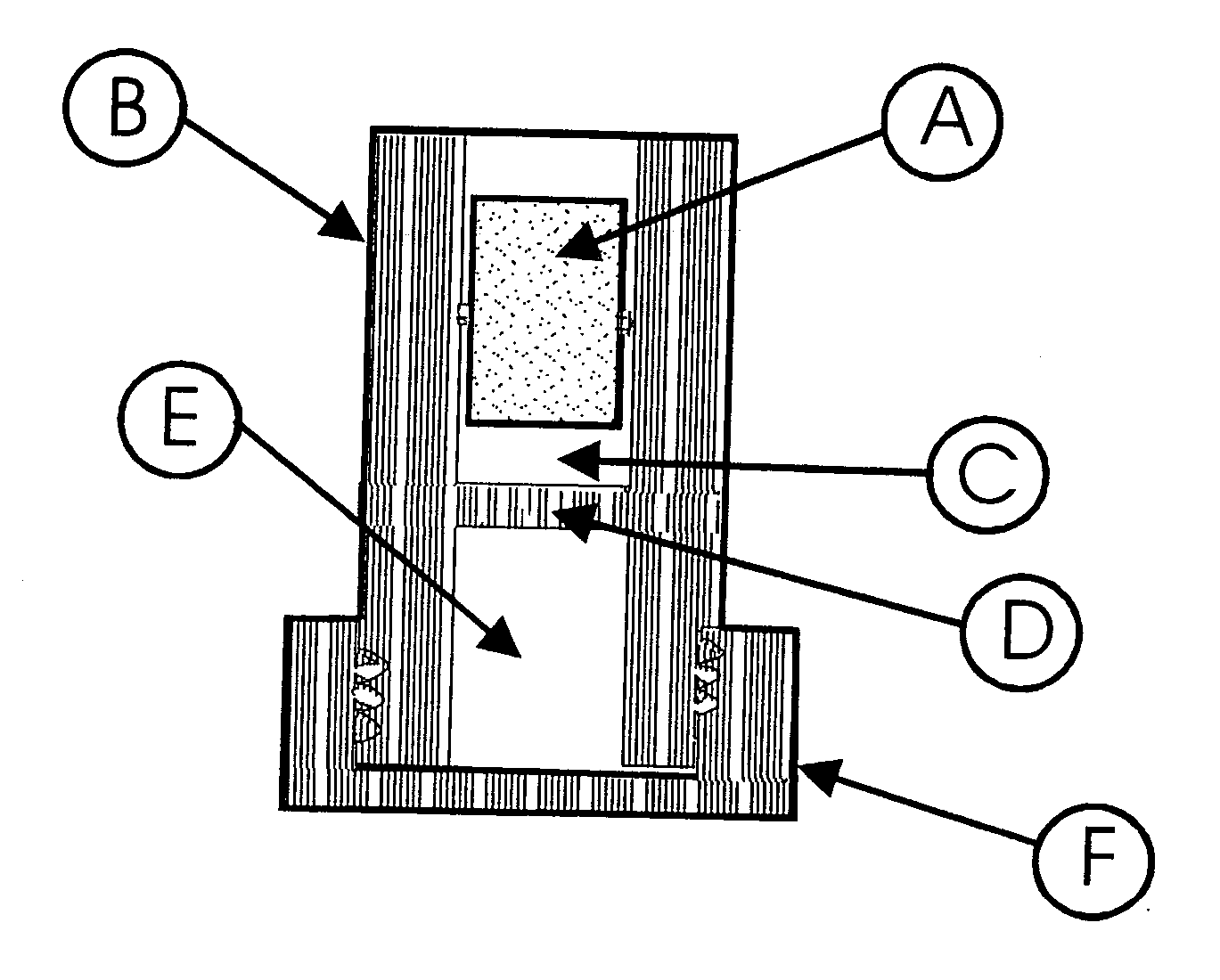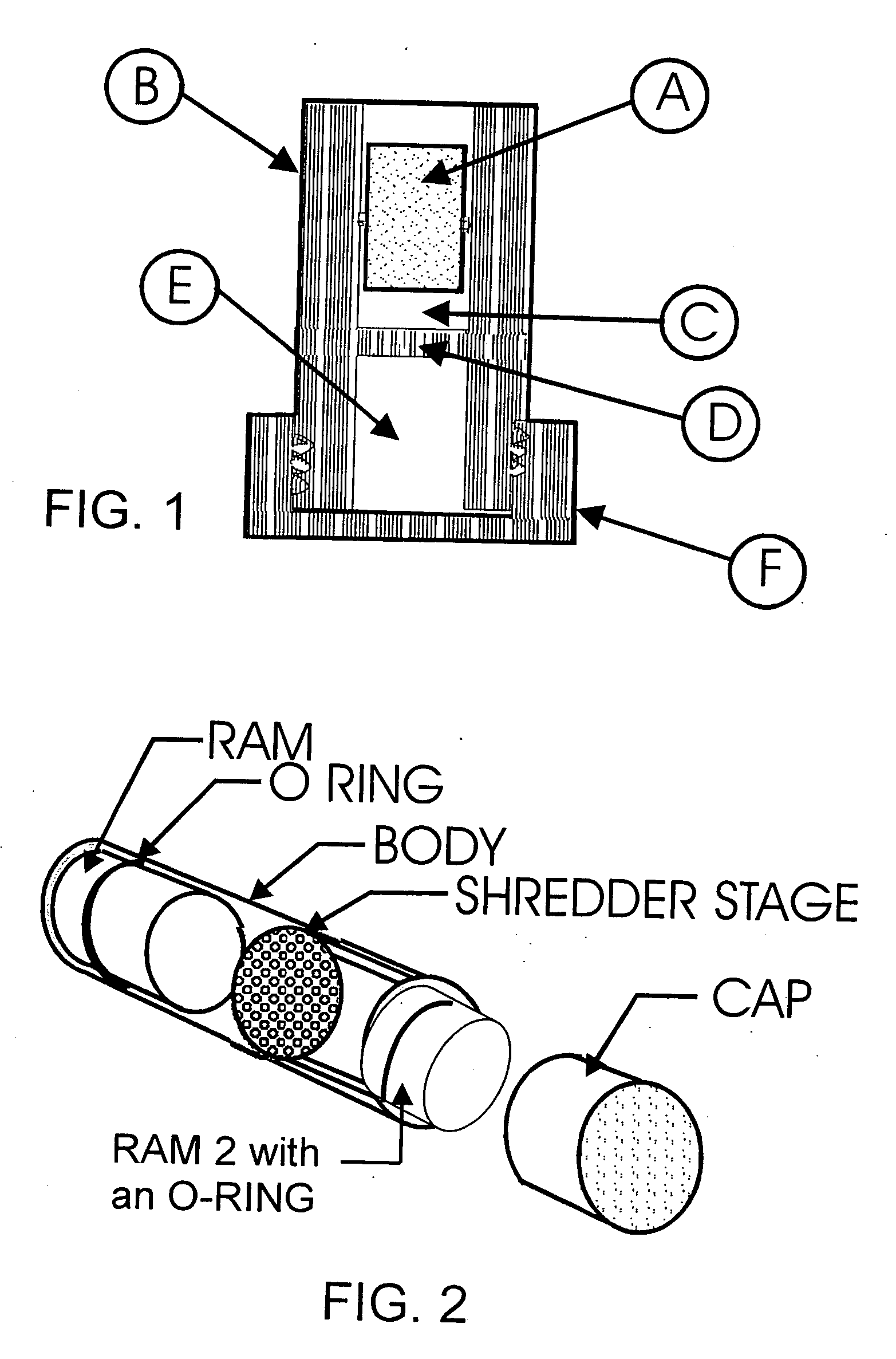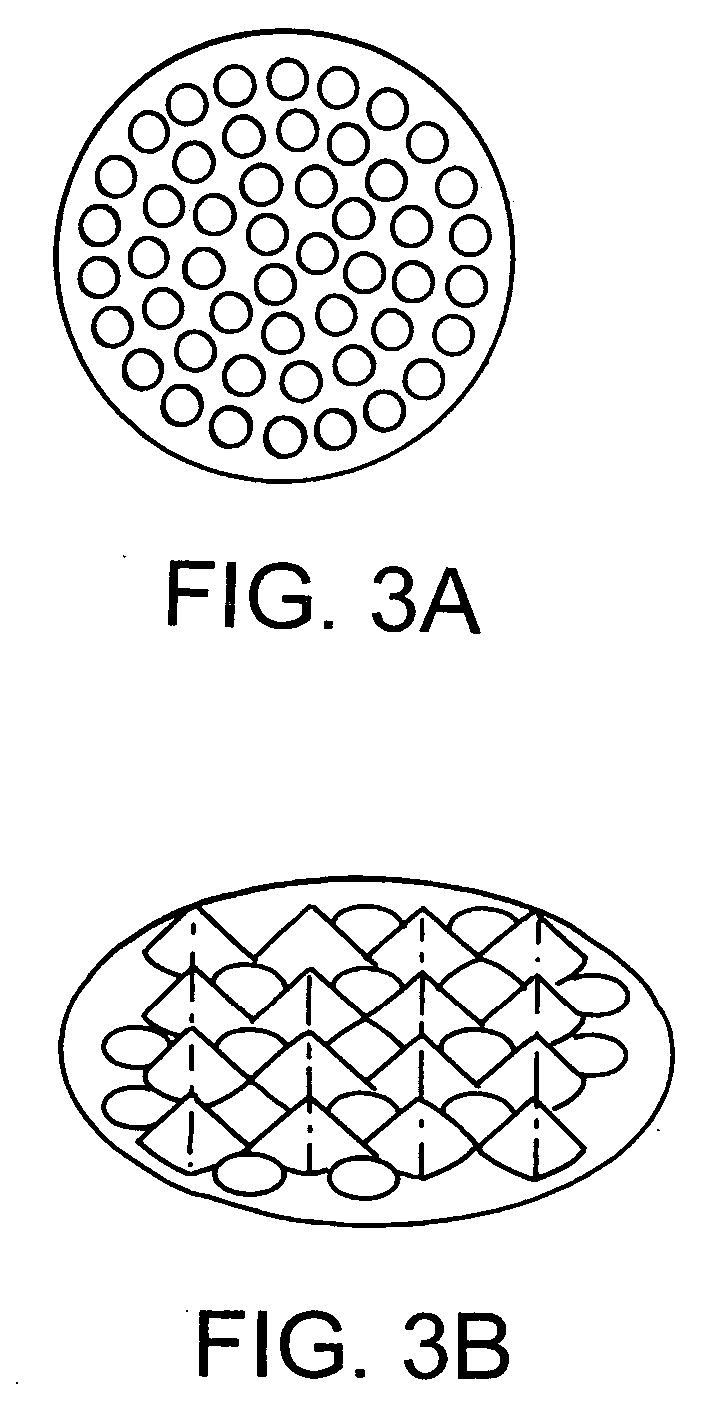Multichamber device for processing of biological samples using high pressure
a multi-chamber device and biological sample technology, applied in the field of methods and multi-chamber devices, can solve the problems of limited current methods for extracting biological molecules from such samples, the difficulty of molecular techniques being applied in plant and animal tissues, and the extensive enzymatic digestion of samples
- Summary
- Abstract
- Description
- Claims
- Application Information
AI Technical Summary
Benefits of technology
Problems solved by technology
Method used
Image
Examples
example 1
Lysis of Rat Liver Sample using Cycled Pressure at Low Temperature
[0122] Whole pieces of fresh frozen rat liver, which were immediately frozen on dry ice, and kept either on dry ice or at −70° C., were obtained from Pel-Freez (Rogers, Ariz.). The frozen tissue was cut on a block of dry ice using a razor blade to approximately 0.20 g, as determined by weighing on an electronic scale. The sample was kept frozen during the cutting procedure and stored in microcentrifuge tubes at −70° C. until use.
[0123] The device used in this experiment was comprised of a body, two rams, and a shredder stage made of polypropylene (see FIG. 2). The body was a cylindrical tube, 38.1 mm long, with an outside diameter of 13.8 mm, and an inside diameter of 11.6 mm. One end of the tube was threaded to accept a cap. The cap was used to seal and hold the ram at the end of the tube. The rams were cylindrical shaped parts that were 12.7 mm long and 11.5 mm diameter. Each of the rams was equipped with an O-rin...
example 2
Study of Tissue Lysis Efficiency and Improvements of the Two Chamber Homogenization Module Design
[0130] Using the rat liver as a model, tests were performed on pressure profile (from 15 to 50 kpsi), cycle number profile (from 2 to 45 cycles), temperature profile (from −30 to 0° C.), number of shredder orifices (from 10 to 89 holes on identical area) and a variety of capture fluids (Gdn / 1% CHAPS; phosphate buffered saline, GTC / 1% NP40). Following each test condition, the capture fluid was transferred to a new microcentrifuge tube and briefly centrifuged at 7,600×g. The supernatant was collected and stored in new microcentrifuge tubes. Nucleic acids were extracted from the supernatant using commercially available kits. For analysis of DNA yields, purified nucleic acids were subjected to RNase treatment followed by analysis by agarose gel electrophoresis. The recovered material was treated with RNase prior to electrophoresis in a 0.8% agarose gel in 0.5× TBE buffer, running at constan...
example 3
PCT Homogenization of Rat Brain, Pancreas Large Intestine and Skeleton Muscle
[0133] The effectiveness of PCT homogenization was also evaluated on several additional tissues, which present distinctive difficulties in extractions. Brain tissue is particularly rich in proteins and lipids, which usually present white, flocculent material in the aqueous phase during an aqueous-organic liquid phase extraction. Pancreas is extremely high in nuclease concentration, such that RNA is usually degraded and difficult to recover by conventional methods. Large intestine and skeleton muscle are fibrous tissues with connective tissue components, making them difficult to homogenize.
[0134] These tissues were PCT processed under the same experimental procedure in the liver used for FIG. 12, except 100 μl, instead of 200 μl lysate was extracted using the Roche High Pure PCR template kit. The final elution volume was 60 μl. The gDNA and rRNA were determined by an agarose gel. FIG. 5 shows that the homo...
PUM
| Property | Measurement | Unit |
|---|---|---|
| volume | aaaaa | aaaaa |
| volume | aaaaa | aaaaa |
| volume | aaaaa | aaaaa |
Abstract
Description
Claims
Application Information
 Login to View More
Login to View More - R&D
- Intellectual Property
- Life Sciences
- Materials
- Tech Scout
- Unparalleled Data Quality
- Higher Quality Content
- 60% Fewer Hallucinations
Browse by: Latest US Patents, China's latest patents, Technical Efficacy Thesaurus, Application Domain, Technology Topic, Popular Technical Reports.
© 2025 PatSnap. All rights reserved.Legal|Privacy policy|Modern Slavery Act Transparency Statement|Sitemap|About US| Contact US: help@patsnap.com



